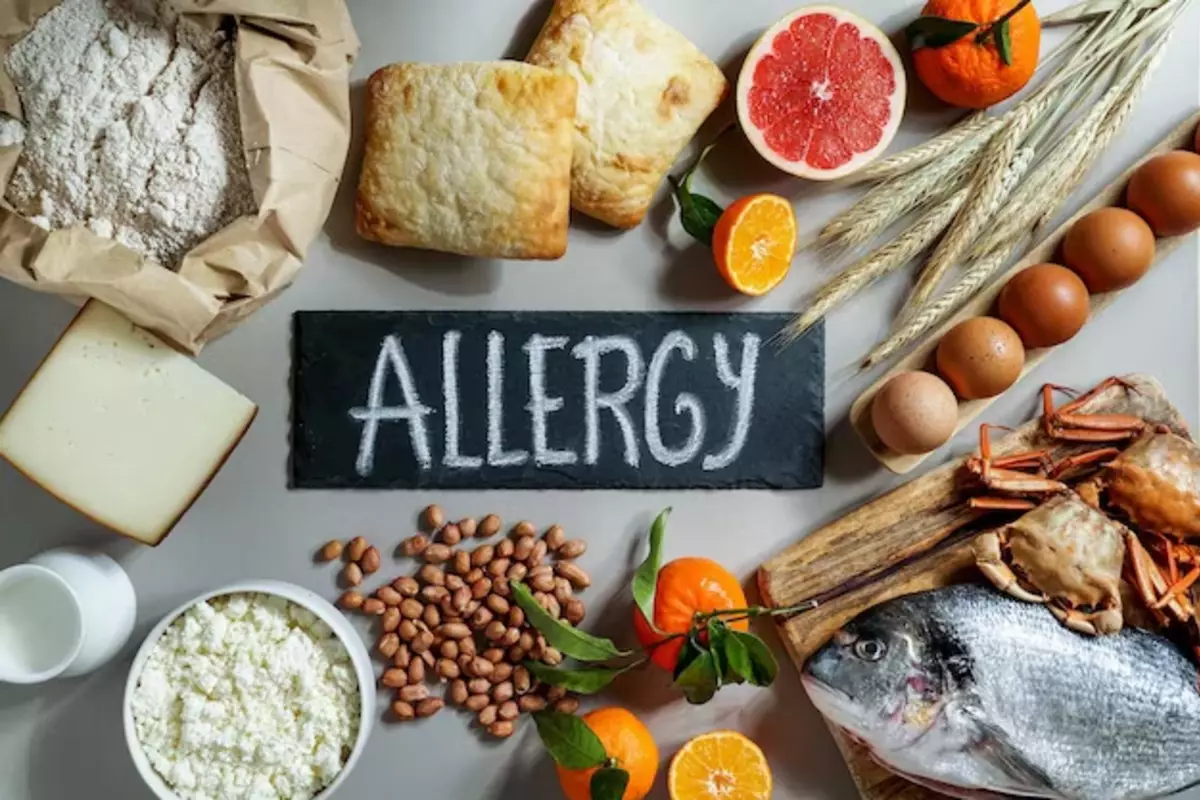
While a chemical response within the body happens with food intolerance after ingesting particular meals or drinks, an allergic reaction to food is evident when the immune system inappropriately responds to an otherwise innocuous item. It is important to understand that only allergies engage the immune system and can result in severe allergic reactions, even if the mild to moderate symptoms of the two disorders might occasionally mimic one another. It is vital to study food intolerance as well as have a clear grasp of what an allergic reaction is.
All you need to know about food intolerances and allergies
Did you realise? Due to their similar symptoms, food allergy and food intolerance are sometimes mistaken, even though they don’t share any characteristics. Food intolerances do not result in severe allergic reactions like food allergies, which do and involve the immune system. Therefore, testing for allergies cannot detect dietary intolerances. It can be difficult to define food intolerance precisely because several food ingredients have been linked to gastrointestinal problems like irritable bowel syndrome, skin rashes like hives, and worsening migraines. So, ask a professional for assistance so they can advise you on this.
Food allergies are more common than ever before since they affect people of all ages. Most allergies first appear during infancy, and cow’s milk allergy is particularly prevalent in young infants. Fortunately, a lot of kids outgrow their sensitivity to cow’s milk before entering school. The onset of allergies is influenced by heredity. Children who have asthma or eczema in the family are more likely to acquire allergies themselves. It’s interesting to note that the majority of kids with food allergies do not have food-allergic parents. However, there is a slightly increased chance for their siblings to have food allergies if one kid in a household has a food allergy.
Also read: Study Finds: Exciting The Brain Might Be Key To Boosting Maths Learning
What is the difference between allergies and food intolerances?
The immune system overreacts to proteins, such as those present in foods, pollens, household dust, animal dander (including hair, wool, and pet-brought pollens), and moulds, causing allergies to develop. This is different from food intolerances. Allergens are known as these proteins. A generally innocuous chemical is seen as hazardous by the immune system, which is indicated by the word allergy. Food intolerance is a non-immune response that some people experience after ingesting particular foods or drinks and is characterised by a chemical reaction. Food intolerance does not engage the immune system like allergies do. Asthma, chronic fatigue syndrome, and irritable bowel syndrome (IBS) have all been related to it.
These are the signs of a food allergy:
Hives are one symptom that frequently denotes a food allergy. These irritated, elevated patches of skin can develop minutes or hours after eating foods that cause allergies, such as shellfish or peanuts. Hives can be followed by other symptoms including lip, tongue, or facial swelling, which may point to a more serious allergic response. GI discomfort is just another indicator of a food allergy that may exist. After consuming foods that cause allergies, some people with food sensitivities may feel nausea, vomiting, or diarrhoea. Although they might arise right once after administration, these symptoms commonly manifest two hours after consumption. Other warning indicators include loud breathing, a persistent cough, wheezing, and disorientation.
Restlessness, shaking, sweating, irregular heartbeats, headache, severe headache, loose stools, tingling or stinging sensations on the skin, and respiratory problems resembling asthma symptoms are all warning
Signs of food intolerance:
Food intolerances and allergies are brought on by:
Peanuts, tree nuts, eggs, cow’s milk, wheat, sesame, fish, shellfish, and soy are the main culprits in food allergies. Only around one in four kids will outgrow a peanut allergy, which is more prevalent in older kids. When consuming dairy products (such as milk, cheese, and yoghurt), chocolate eggs (especially egg white), flavour enhancers like MSG (monosodium glutamate 621), food additives, strawberries, citrus fruits, tomatoes, and red wine, people who are sensitive to certain foods may experience intolerance reactions.
Also read: Study Finds: Exciting The Brain Might Be Key To Boosting Maths Learning
How can food intolerance and allergies be avoided?
Keep a diet and symptom journal to track any odd symptoms and contact the doctor right away. It is advised to eat a variety of fruits, vegetables, complete grains, and fermented foods like yoghurt to support a healthy gut. Moreover, refrain from overusing antibiotics. Making the decision to breastfeed for at least six months can also help to improve intestinal health. In order to treat a food allergy or intolerance, one should strive to cut out the offending items from their diet. In certain situations, especially in cases of food intolerance, the body may acquire tolerance for the food if it is initially ignored and gradually reintroduced.
To read more such news, download Bharat Express news apps






















